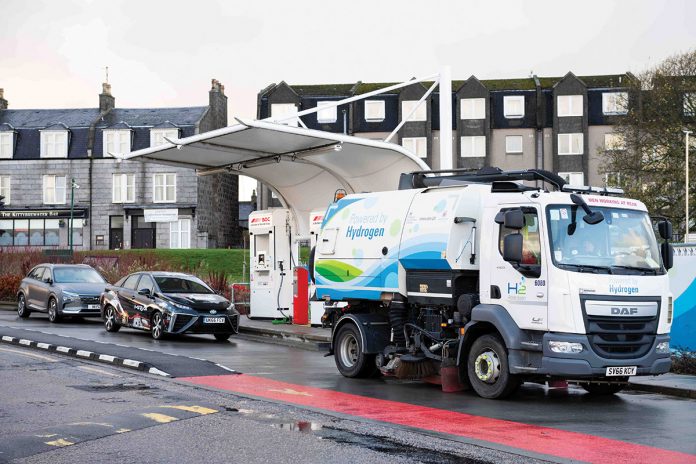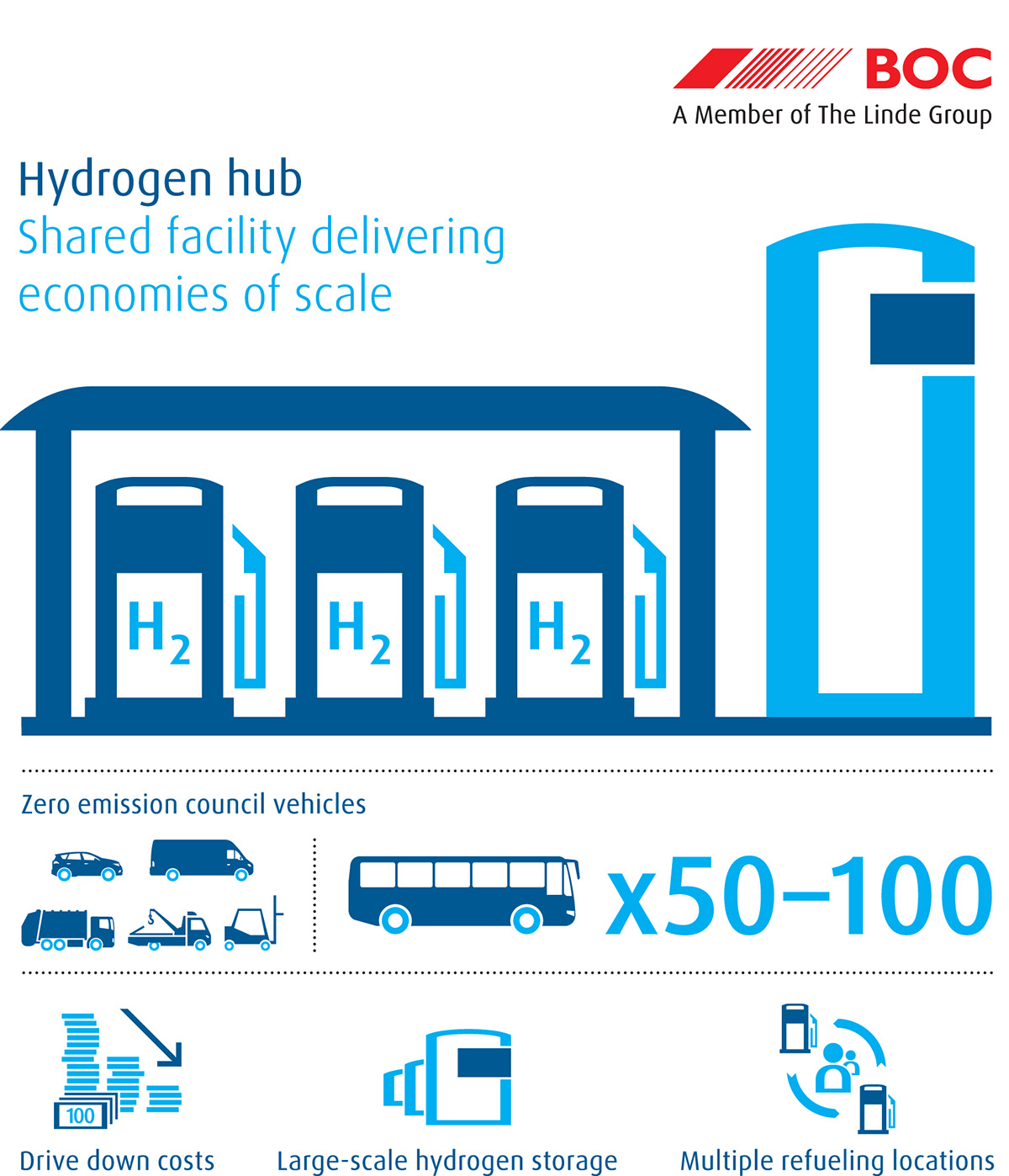
Mark Griffin, Hydrogen Market Development Manager for Clean Fuels, BOC, explains how to deploy hydrogen transport infrastructure to meet net-zero in this guide for councils
In the last two years, 74% of UK councils have declared climate emergencies, including eight combined authorities/city regions. The challenge for many is to act on their declarations. That means committing to policy, funding green infrastructure projects and engaging with the public, businesses and public sector stakeholders to lower emissions.
The case for hydrogen
The use of hydrogen as a clean fuel for transport is attracting serious interest up and down the UK, with a number of city councils already taking action. The government’s recent ‘Ten-point plan for a green industrial revolution’ commits it to drive the growth of low-carbon hydrogen.
BOC has been working with a number of councils to help them develop their hydrogen refuelling capabilities. For example, Aberdeen City Council is expanding its existing fleet of hydrogen-fuelled buses, Glasgow City Council has set out proposals that all of the council’s vehicles should be emission-free (a mix of hydrogen and electric) by the end of 2029. Also, Liverpool City Region is developing plans to use hydrogen to help achieve its 2040 zero-emission target.
Hydrogen, when used with fuel-cell vehicles, offers true emission-free mobility, fast refuelling, long-range and is a particularly suitable fuel for heavy vehicles, such as buses and trucks. It offers a much better vehicle power-to-weight ratio than batteries, which makes it possible to travel long distances without significantly increasing vehicle weight.
For small passenger vehicles, the fast refuelling and range benefits are especially useful where access to battery EV charging equipment is limited, for example, where there is no off-street parking.
Producing hydrogen with renewable energy
Green hydrogen can be made at a refuelling station using renewable electricity to power an electrolyser. The hydrogen is compressed for storage and connected to a dispenser to refuel the vehicle, similar to a conventional fuel pump.
Deploying a small, standalone vehicle refuelling station demonstrates the viability of hydrogen refuelling and has value in raising awareness of hydrogen’s capabilities. However, to produce a compelling business model for hydrogen infrastructure requires deployment at scale.
Funding projects: The importance of scale
A hydrogen hub brings together a number of users to share a hydrogen refuelling facility. A large user base creates regular demand for hydrogen and maximises the procurement potential for councils. These financial benefits extend to the purchase of vehicles and investment in the hydrogen refuelling station itself. Producing higher volumes of hydrogen helps to reduce the per-mile fuel cost.

Where councils can commit to or facilitate the creation of fleets of 50-100 vehicles or more, the economics of hydrogen refuelling change dramatically. Local authorities looking to drive up demand and produce higher volumes of hydrogen will find a range of different investment models available, including the option to have BOC fund the capital cost of the refuelling station. This removes one of the biggest barriers to developing hydrogen infrastructure and frees up capital to invest in vehicles.
Collaboration is key
Bringing together a hydrogen hub that serves a multitude of projects helps to realise the full value of hydrogen for transport. A hub enables local authorities to focus on a coordinated scalable approach rather than dealing with numerous, isolated, small-scale projects that fail to realise the benefits offered by economies of scale.
A hub demands a collaborative approach between the local authority, fleet operators and other users, vehicle suppliers, sources of funding, an energy supplier and the refuelling station developer. The local authorities are responsible for supporting various vehicle fleets, including privately operated buses as well as council refuse trucks, vans and cars. Other users can include public sector organisations such as the NHS and police. Early adopters in the private sector are likely to include taxi fleets, logistics companies, supermarket delivery vehicles and other users that need to travel longer daily distances without the time to recharge batteries. A hydrogen refuelling hub also gives private motorists the option to run a fuel-cell car.
BOC’s modular approach to hydrogen refuelling allows hub operators to size their refuelling station to the initial user base and scale up production volumes as demand grows.
The fuel of the future – today
To meet the country’s net-zero emission targets, we need to fast-track deployment of hydrogen-fuelled zero-emission vehicles. City councils can work collaboratively and take advantage of working with BOC to tailor a hub funding model to lead this transition and act as catalysts for hydrogen hubs. And, as the number of hubs increase, so regions will develop a cluster of hydrogen refuelling stations that will help realise the full potential of hydrogen as a transport fuel across the UK and beyond.
Download BOC’s guide to deploying hydrogen refuelling infrastructure.
Please note: This is a commercial profile










